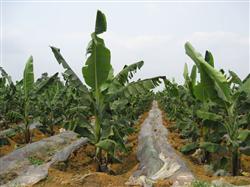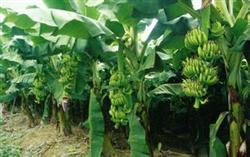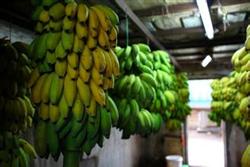The yield of banana was significantly increased by ridge and furrow cultivation.

The yield of banana in dryland is relatively low when cultivated by conventional methods, but the main factors restricting the yield of banana in dryland can be fundamentally overcome and a good harvest can be obtained by planting in ridges and furrows. In the past two years, banana farmers in some banana producing areas have adopted this technology and achieved remarkable results in increasing production. The technology is introduced as follows. 1. Site selection: choose terraces and gentle slopes where the soil layer is deep and loose, leeward to the sun, and are not easy to be submerged or washed by floods (about 10 degrees). If there is a source of water nearby, it is best to draw water and irrigate, and avoid high water level and low-lying land. Ditching: the plot can be ploughed and raked, or it can be connected to the east-west direction according to the row spacing of 2-2.5 meters, and the slope is trenched along the contour line, with a width of 0.8 meters and a depth of 0.5 meters, applying organic soil fertilizer and phosphate fertilizer, and retaining the depth of 0.25-0.3 meters after filling back the topsoil. then the soil is gradually expanded and filled back. two。 Transplanting: choose tissue culture seedlings in nutrition bag, which are required to be transplanted in rainy season. Open holes in the planting ditch according to the plant spacing of 1.8-2 meters before transplanting. Remove the nutrition bag when transplanting, immediately sprinkle the fixed root water after transplanting, cover the ditch surface with straw and leaves, and cover it for the second time before winter. 3. Fertilization and soil cultivation: early topdressing, mainly water and fertilizer, where there are no conditions, dry fertilizer should be applied in time after rain, and big fertilizer should be applied in the critical period. Fertilization combined with soil cultivation, small fertilizer and small soil, big fertilizer and big soil, avoid root floating sunburn, improve fertilizer efficiency and wind resistance of banana orchard.
- Prev

Requirements of banana on soil conditions
Cultivation techniques Banana is a large perennial herbaceous monocotyledonous plant, its underground stem is a thick bulb, from which roots, stems, leaves, flowers, fruits and sucking buds (for reproduction) grow. Banana likes high temperature and high humidity. The growth temperature is usually 20: 35 ℃, the optimum temperature is 24: 32 ℃, and the critical temperature of each organ is 10: 12 ℃.
- Next

Ripening technology of banana
1. Natural physiological post-ripening. That is, depending on the post-ripening effect of banana fruit itself, the method of yellow ripening can be achieved without artificial addition of ripening agents. In the warmer season (20 ℃-30 ℃), bananas are combed and packed into fruit baskets of about 25 kg each, then placed in an airtight room and stacked on 3-5 floors, about 7-10 days.
Related
- Moge, come on! The staff of the peasant association in the producing area of cantaloupe were frightened when the crowd gathered.
- Causes and Solutions of low Fruit setting rate of Apple
- Symptoms and control measures of passion fruit virus disease
- Fruit growing lesson: how do apple orchards keep high yields?
- Can you build orchards in the mountains? What are the pros and cons?
- How to manage the coloring period of Crisson grape?
- This paper introduces the processing technology of two kinds of fig products.
- How much is a month for retired teachers in rural areas by 2020?
- How can strawberry planting increase sugar content? We should pay attention to management in many aspects.
- What are the cultivation techniques on how to improve the yield of golden fruit?

